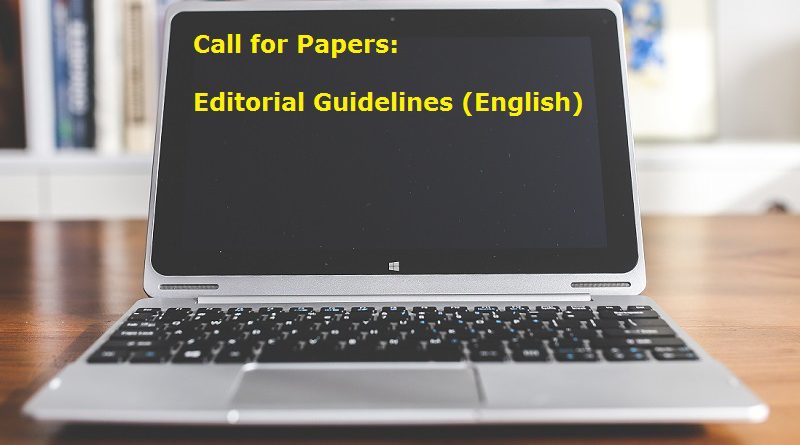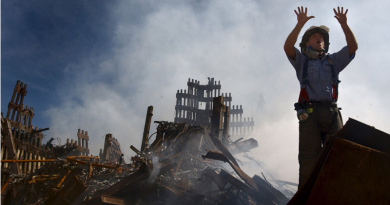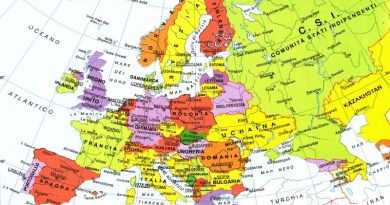CALL FOR PAPERS: Editorial Guidelines (English version)
“Call for Paper” is a cultural room where it is possible to read trends and gather innovative proposal, in order to express their own opinion about several topics we are concerned to debate. October 2016 theme: “Terrorism and Europe”
FILE TO BE DELIVERED TO THE EDITORIAL STAFF
Format: Word, extensions *.doc, *.docx or *.odt; Font: Verdana/Times New Roman; Pt.: 12.
Text layers (centred, bold and italics as follows).
TITLE
- Chapter Title
- Subheading
- Paragraph
except in cases where the article is composed by narration of episodes: in this case, the normal character is used. In all other cases, the structure shall be stated clearly as indicated.
Miscellaneous:
- Abbreviations: normally, they should be used as less as possible.
- References: if not precise, they should be inserted in the text (i.e. hereinafter), distinguished only by inverted commas at the beginning and the end of the quote. The reference note should begin with the data Cf., Surname, etc.
Example: Gertrude says: “The lady do protest too much, I think.” And Hamlet’s mother, the queen, saw herself in the play.
Precise quotes and with a cross reference to the footnote should be inserted in the text (i.e. hereinafter), distinguished only by quotation marks at the beginning and the end of the quote.
Example: «Even for me life had its gleams of sunshine.”
- Missing text: when in a reference words or sentences are added, they should be put in brackets, in romans if integrate the text, in italics if comment it. When, on the contrary, words or sentences are suppressed, those parts are indicated by three full stops enclosed in square brackets without punctuation before and after.
Example: Along the street saw […] one or two people (it is too much don’t discern between one or two!)
Example: Since it is not here yet [the train] from London, I suppose something wrong is happening.
- When a quote refers to a note, the footnote reference should be put in superscript, before the punctuation at the end of the quote.
Example: «Perhaps one did not want to be loved so much as to be understood»[1].
- Footnote
Always at the bottom of the page;
If possible, insert the author’s name in full and the publisher’s name as reported in the official website.
Example: HarperCollins
Journals
The name of the journal between quotation marks, indicated after the author in small capitals, the title of the article (italics) and comma. Number of journal, year (brackets without spaces), pages.
Example: Roberts, Nicole A.-Levenson, Robert W., The Remains of the Workday. Impact of Job Stress and Exhaustion on Marital Interaction in Police Couples, in «Journal of. Marriage and Family» 63, 4(November 2001), pp. 1052-1067.
- Bibliography with the same standards of the footnote. Bibliography should always be put all at the end, eventually specifying the article which refers to. The number of page should NEVER be indicated in bibliography, but in the footnote.
- Foreign words not in common use, in italics. Je ne sais quoi, do ut des
- Acronyms with no intermediate punctuation. For the first time, the extended version should be written and the acronym in brackets , as following: Basic Life Support (BLS).
- Use of the quotation marks/inverted commas as follows: quotation mark «» should be used, and within them, the inverted commas “ ”.
Example: Jesus affirmed: «Not everyone who says to me, “Lord, Lord,” will enter the kingdom of heaven, but only the one who does the will of my Father who is in heaven.».
PROPER NAMES
- Institutions and associations in romans with an initial capital. The foreign ones in the original language (not translated).
Example: I work for the Anthropological Society; she attended Cambridge University; the Rotary Club.
- Buildings, palaces, public places in romans, with no inverted commas and with an initial capital.
Example: Eiffel Tower, Empire State Building, the Waldorf Astoria, Covent Garden, the Mandarin Hotel.
- Ships, aeroplanes etc.
Proper names of ships and aeroplanes in italics.
Example: the Titanic, the Enola Gay.
- If, on the contrary, the name refers to a type of aeroplane or ship, in romans with no inverted commas and with an initial capital.
Example: a Spitfire, three Hurricane, a Constellation.
Personal names (foreign)
- Personal names (philosophers, artists, politicians, scientists etc.) in the original language, unless the standard doesn’t prescribe the opposite.
Example: Leonardo da Vinci; Karl Marx. But: Raphael.
- Avenues, squares (foreign)
Always in romans and with no inverted commas (if foreign, with an initial capital).
Example: Piazza San Marco, Via Condotti; but place Vendôme, boulevard des Italiens, avenue des Champs-Elysées.
INDEX AND CONTENTS
Index ALWAYS at the end of the writing; it comes with page numbers and includes up to 4/5 text layers.
Contents ALWAYS at the beginning of the writing; it comes with a brief description of the content of the chapter.
TRASLATION AND EDITING BY CHIARA RINZIVILLO © RIPRODUZIONE RISERVATA
Se hai gradito questo articolo, clicca per favore “Mi piace” sulla pagina Facebook di The Horsemoon Post (raggiungibile qui), dove potrai commentare e suggerirci ulteriori approfondimenti. Puoi seguirci anche su Twitter (qui) Grazie.






Devi effettuare l'accesso per postare un commento.